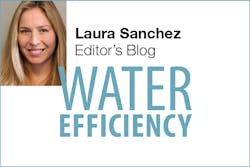Children’s toys, broken electronics, fragments of plastic, and abandoned fishing nets. It sounds like a line from poet Pablo Neruda’s Ode to Things. But instead, it’s an account of the debris swirling between Hawaii and California in the Great Pacific Garbage Patch (GPGP) as observed by oceanographer Laurent Lebreton and a team of scientists.
A recent study published in the journal Scientific Reports has, for the first time, quantified the Great Pacific Garbage Patch’s (GPGP) dimensions and content. It determined that an estimated 1.8 trillion pieces of flotsam cover an area roughly four times the size of California—four to 16 times bigger than previously thought.
Earlier attempts to analyze the GPGP’s ocean plastic concentrations were gathered from samples collected with surface trawls. Because the small net size and limited surface area covered, scientists were concerned with the accuracy of these studies and that the data may have omitted larger plastic objects such as bottles, buoys, and fishing nets.
Therefore, for this study, researchers conducted multi-vessel trawl sampling over the course of three months to gain an accurate measurement of the distribution of buoyant plastics. The team also conducted aerial surveys to gather geo-referenced imagery and refine their count of larger debris particles. They compared their datasets with historical accounts in order to evaluate the rate of plastic accumulation in the GPGP.
They discovered that the GPGP is growing “exponentially.”
More plastic was produced in the last decade than ever before. Today’s global annual plastic consumption has reached over 320 million tons, according to a recent New York Times article. Around 60% of that plastic is less dense than seawater, meaning that it may join the 87,000 tons’ worth of debris floating in the GPGP’s oceanic gyre.
These statistics are alarming. And it seems that, as an industry, there must be a way for us to actively support efforts to find a solution. How can we leverage our organizations’ current investment in technologies related to filtration and separation? How can we tap into the wealth of collective experience gathered by our colleagues?
“…this ocean is yours, and mine,” wrote Pablo Neruda in Ode to Things, “these buttons and wheels and little forgotten treasures, fans upon which love has scattered its blossoms, glasses, knives and scissors—all bear the trace of someone’s fingers on their handle or surface…”
In what ways do you think the water industry can help decrease the accumulation of plastics in the GPGP?
